Wild Isles – Native woodland in Sherwood Forest, Nottinghamshire
Did you see the amazing ancient oak woodlands in the first episode of Wild Isles?
These habitats are brilliant for biodiversity, but it’s a real balancing act to ensure we have the right tree in the right place.
Trees are just one of the ways we can capture carbon and help combat the Nature and Climate emergency.
At Sherwood Forest we’re looking after ancient oaks to benefit wildlife, and restoring our rare ancient oak woodland and heathland habitats for species like Lesser Spotted Woodpecker and Tree Pipits.
What does the 'right tree in the right place' look like?
Imagine the responsibility of caring for a place that is famous across the world, attracting visitors from far and wide. The responsibility doesn’t end there. In little more than a century or so, its landscape has become one of a very few habitats of its type to be found anywhere, supporting vulnerable species which are confined to a declining number of locations.
What’s more, the work you do today isn’t just about planning for the next few years, but for centuries to come. ‘The right tree in the right place’ has become the mantra of the staff and volunteers at RSPB Sherwood Forest and Budby South Forest.
It’s the key to extending the longevity of nature-rich ancient oak trees, some as old as 1,000 years, as well as to identifying the ancients of the future. Without the presence of ancient oaks, the ecological cycle of Sherwood would be irreparably broken. The decaying wood of the ancient oaks found within cavities, fractures and wounds for example, support populations of saproxylic invertebrates, which are insects that depend on this unlikely-sounding habitat for part or all of their life-cycle.
Three species of woodpecker (lesser spotted, pictured below left), as well as Nuthatches (right), Treecreepers, Tree pipits, Nightjar, Redstarts and many, many other bird species call Sherwood home for at least part, if not all of the year. Fungi flourishes in the autumn, with the soil around the roots of trees providing the ideal conditions for fungi to colonise and spread, including the rare oak polypore.
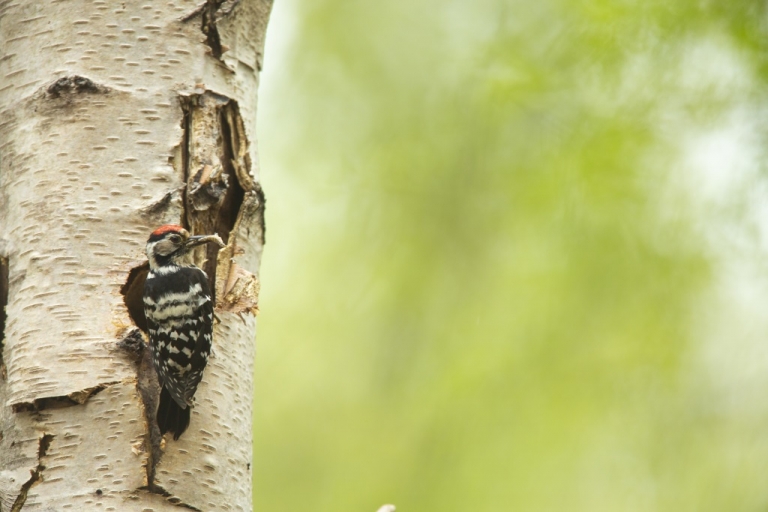
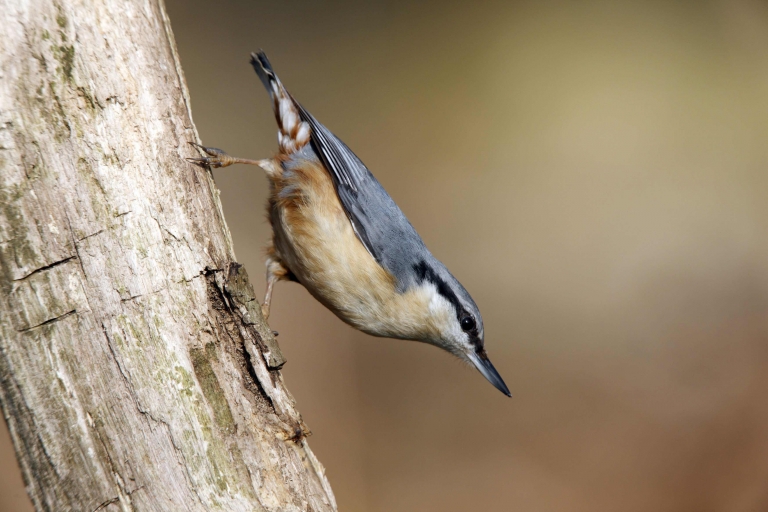
Across the wider Sherwood area, there are almost 1,000 ancient oak trees, with almost 400 of them found within the RSPB reserves of Sherwood Forest and Budby South Forest. They stand proudly within a mixed landscape of oak and birch woodland, wood pasture and lowland heath, which offers a glimpse of the forest that Robin Hood himself might have recognised.
In fact, that Medieval landscape, which once covered 100,000 acres – a fifth of present-day Nottinghamshire – has reduced dramatically. Since the Norman Conquest. Sherwood has been a royal hunting forest, favoured by kings, used under strict Forest laws for grazing livestock and gathering fuel. It then became a source of timber for ship-building, construction and the processes of the Industrial Revolution, before becoming a popular visitor destination in the Victorian era, a country park and nature reserve.
What’s more, the harvesting of trees in the 16th and 17th centuries meant a generation gap existed between the ancient trees and younger oaks planted around the time of the Napoleonic wars. There was a very real chance that Sherwood could eventually be left without any ancient oaks for hundreds of years, getting rid of the fine and increasingly rare ecological balance that exists here.
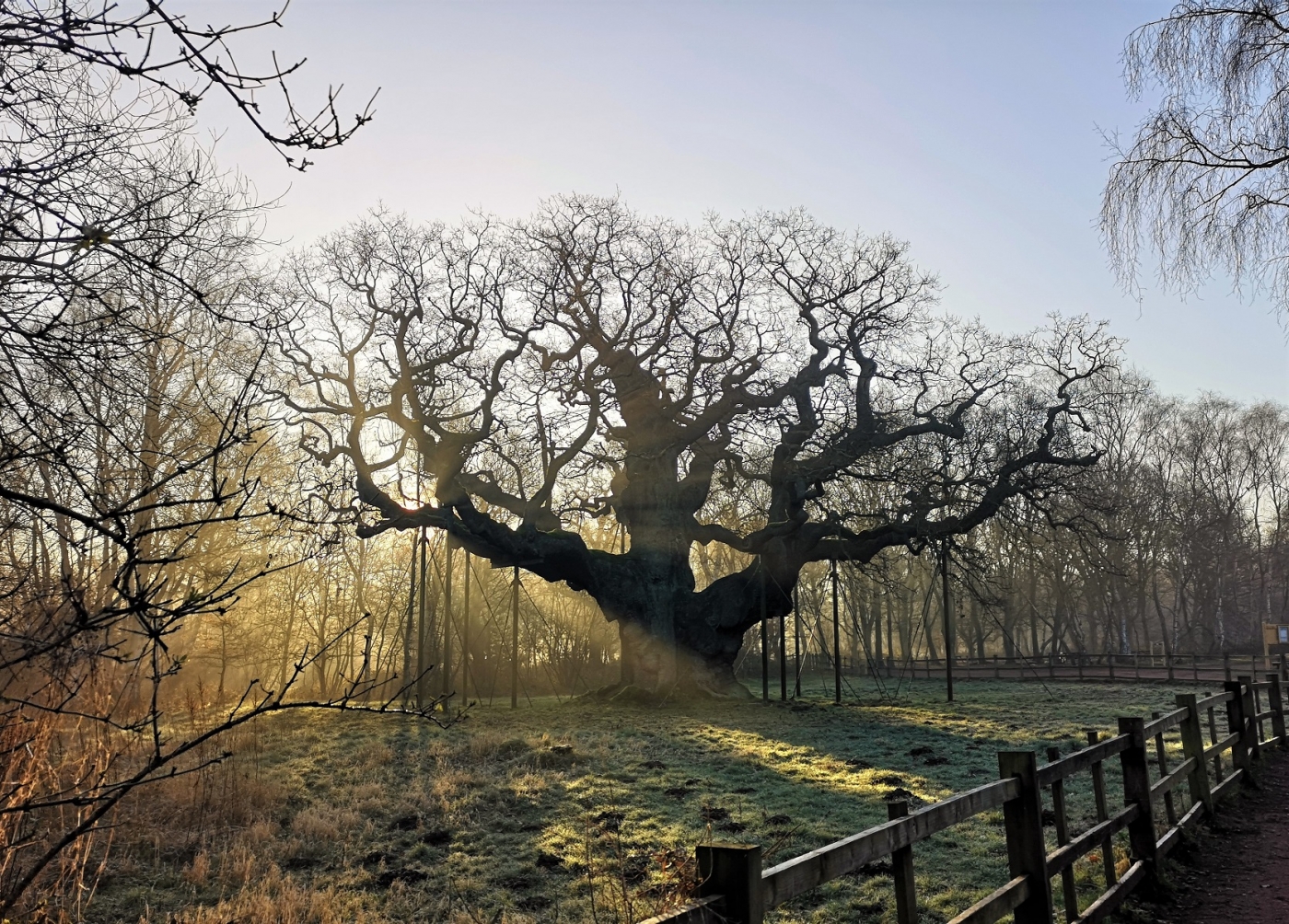
The Major Oak, estimated to be more than 1,000 years old. Photo by Lucy Hodson.
What is the RSPB doing to help?
Our native trees are essential. They purify our air, capture carbon and provide food and shelter for thousands of species. But centuries of poor management and destructive development has left the UK with only 13% tree cover, and only half of this is native woodland. In fact, we are one of the least wooded countries in Europe. Losing our ancient Woodlands means losing the precious wildlife they support such as Lesser Spotted Woodpeckers.
Understanding which of the forest’s trees support biodiversity now and those that can continue to do so far into the future takes vision. Working with expert tree surgeons and other specialists, the team at Sherwood is able to map these vital trees and assess how others nearby may be negatively impacting them.
That impact may be in the form of reducing the large amount of light and space the ancient oaks need to survive. In that instance, removing younger competing trees or pruning away the encroaching canopy may be the best option.
Halo thinning, as this is called, can often be carried out by Sherwood and Budby’s community of around 100 volunteers, working under the guidance of the staff from the reserve’s outdoor team.It helps to restore the open habitats of wood pasture and lowland heathland, opening up space to allow magnificent ‘open grown’ oaks and other trees of interest.
The right tree in the right place is an approach which is also helping to ensure there is sufficient complexity within the landscape. While overwhelmingly populated by oak and birch, other native species like crab apple, rowan and hawthorn are encouraged and, where appropriate, strategically planted.
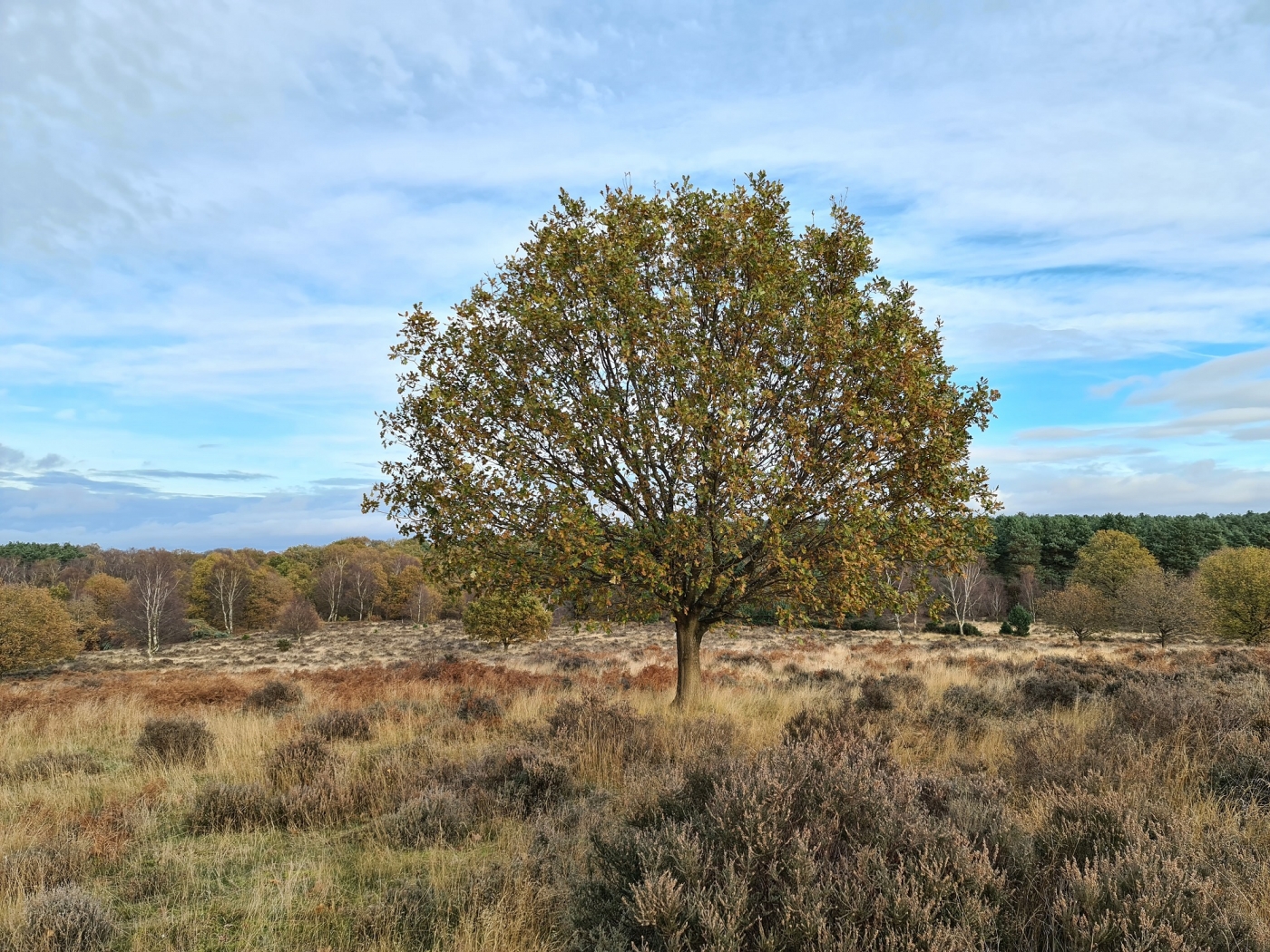
A magnificent open grown oak on the heathland at Budby South Forest, immediately to the north of Sherwood. Photo by Chloe Ryder.
But that is only part of the answer. At Sherwood, we are also taking an approach which is designed to speed up the process of decay in younger trees. Veteranisation is a technique which is all about mimicking features which ordinarily occur in nature over the course of centuries: a lightning strike or a fractured limb caused by heavy snowfall.
Or maybe the hole excavated by a Lesser Spotted Woodpecker – another species that relies on decaying wood facing extinction in the UK.
Veteranisation techniques expose the heartwood of the carefully selected young trees to the elements and fungal communities, accelerating any number of decay processes.
The tree remains living, although a limb or crown may be selected to eventually rot away, opening up light to nearby ancients, and indeed ancients of the future which will succeed them in sustaining this vital nature-rich environment far into the future.
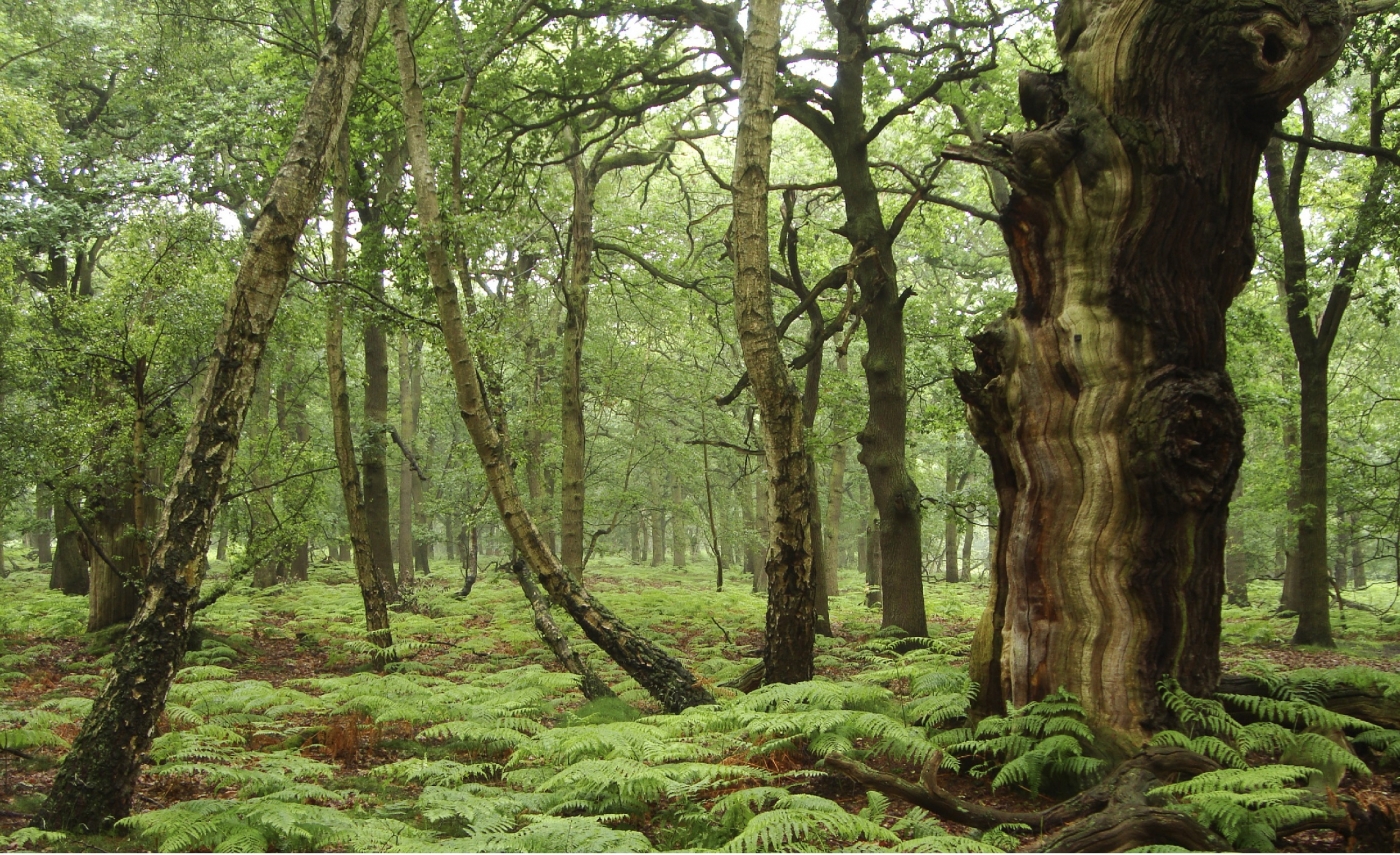
What can I do to help?
Planting the right tree in the right place for wildlife can help in gardens too! Native trees provide the right food and shelter for our native species, and we’ve pulled together some expert advice to help you decide what tree is right for your space here – https://www.rspb.org.uk/get-involved/activities/nature-on-your-doorstep/garden-activities/grow-a-tree-for-wildlife/
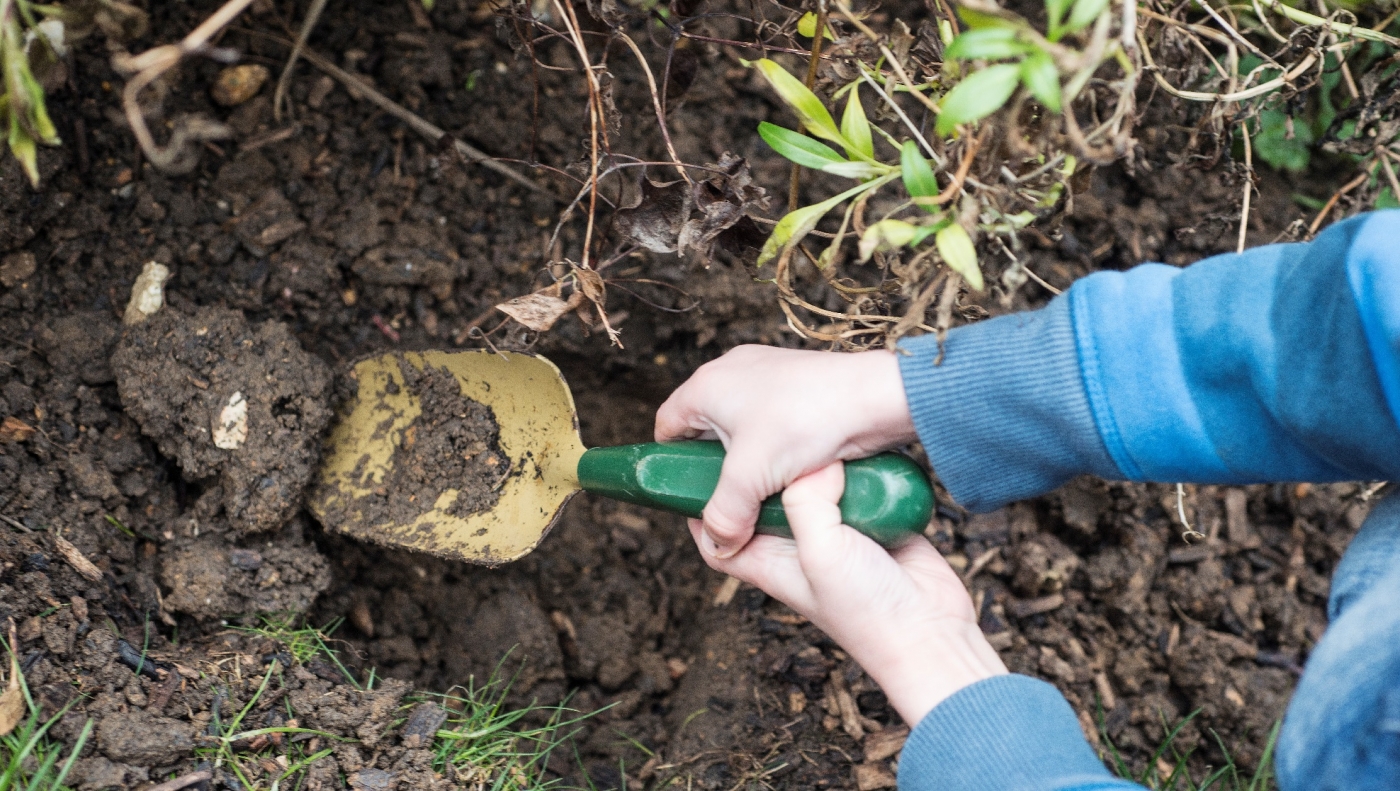
Don’t have space for a tree? Even piles of decaying wood can be brilliant for biodiversity, make your own mini Sherwood Forest here! https://www.rspb.org.uk/get-involved/activities/nature-on-your-doorstep/garden-activities/create-a-log-pile-for-wildlife/